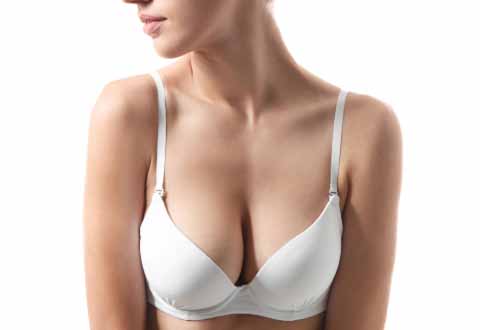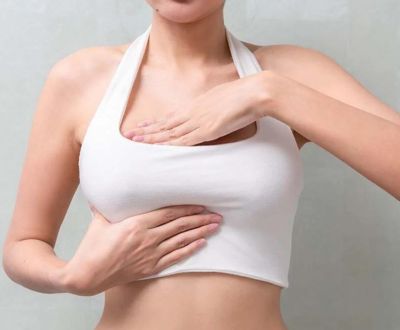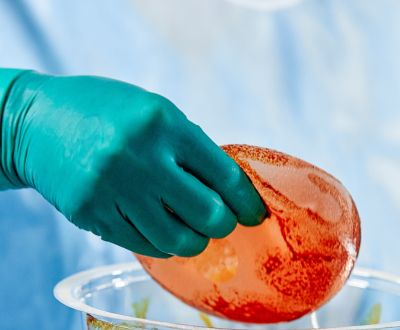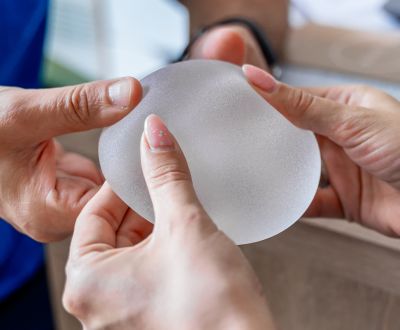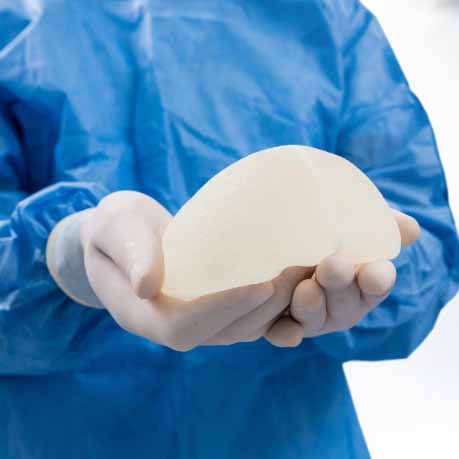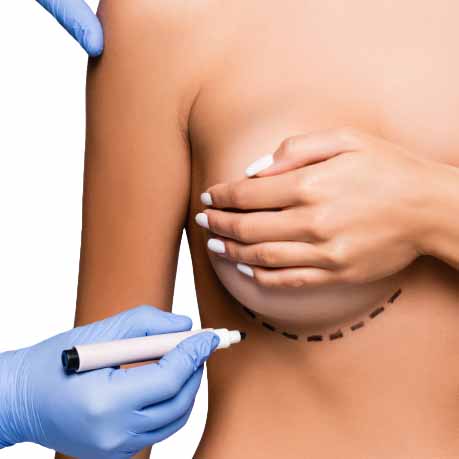Capsular Contracture
Risks and Complications – Breast Augmentation
Capsular Contracture
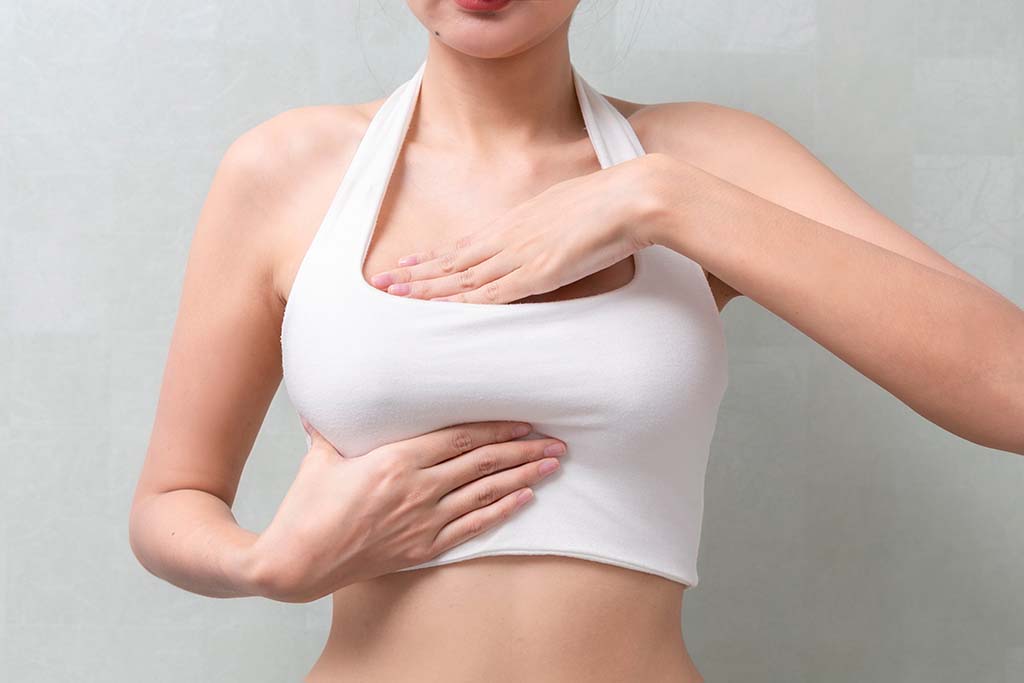
Capsular contracture is the most common complication following breast augmentation. Breast distortion from capsular contracture is a process that can become apparent any time following breast augmentation but usually becomes noticeable in the early months after breast implant placement.
What is capsular contracture?
When breast implants are surgically placed, your body normally responds by forming a reactive lining around it. This is your body’s natural response to any embedded foreign object. This reactive lining around the breast implant is often called the “capsule”, “tissue capsule”, “fibrous capsule”, or “scar capsule”, and is formed by your own living tissue. Fortunately, following most breast augmentation procedures the capsule remains thin and your breasts remain soft and supple. Occasionally, the capsule becomes thickened and tight resulting in a distorted breast shape. This is called capsular contracture.
The exact cause of capsular contracture following breast implant placement is not fully known. What is known is that your body responds to the surgical placement of a breast implant by triggering a healing process. A capsule, encompassing your breast implant, composed of fibrous tissue forms during this healing process. Fibrous tissue is genetically programmed to contract and shrink scar tissue when subjected to a stimulus. With most breast augmentations, the fibrous tissue is not stimulated and the capsule remains loose around the implant allowing your breasts to look and feel natural. However, in some people, the capsule will contract, tighten, and squeeze the implant. When this takes place, your breasts may appear distorted and feel firm. When capsular contracture is severe, your breasts may take on a “ball-like” look. It is important to remember that it is not the implant that has hardened. The shrinking and contraction of the capsule compress the implant causing it to feel firm. Once the implant capsule is revised, your breasts will return to their natural softness as it was on the day of your original breast augmentation procedure.
What causes capsular contracture?
While the causes for capsular contracture are not known, medical science has advanced sufficiently to identify circumstances that may put you at greater risk for developing capsule contracture:
- Biofilms and opportunistic bacterial contamination: Opportunistic bacteria that can organize as thin films on the surface of implants are thought to be a leading cause of capsular contracture of breast implants. These bacteria do not normally cause illness, however, when attached to a surface biofilm to the implant, they have been suggested as the stimulus that triggers the growth and contraction of the fibrous tissue leading to the shrinking of the capsule and distortion of the augmented breast.
- Infection: Following a breast infection, capsule contracture is more likely to develop in the augmented breast.
- Previous Capsular Contracture: Medical studies have shown that any woman who undergoes revision surgery for a previous capsular contracture is at greater risk of recurrent capsular contracture following subsequent surgeries of the breast.
- Hematoma: Hematoma (bleeding in the breast) can trigger an inflammatory reaction leading to capsule contracture.
- Seroma: Fluid collections (seroma) developing around a breast implant have also been shown to increase the risk of developing capsular contracture following breast augmentation.
- Smoking: Cigarette smoking decreases blood oxygen levels, may increase the risk of delayed healing, and possibly initiate an inflammatory reaction triggering capsular contracture.
- Implant Placement: Surgical placement of breast implants into a submuscular versus subglandular pocket was once believed to be a risk factor in the later genesis of capsular contracture. However, the medical literature now suggests that the risk of capsular contracture is not significantly altered by the choice of submuscular versus subglandular breast implant placement.
How do I know if I have a severe capsular contracture?
The most common grading system used in defining the severity of capsular contracture is the Baker Grading System. According to this classification, all women who have breast implants can be classified into 4 outcomes following breast augmentation:
- Baker Grade I – Soft breasts with a natural look.
- Baker Grade II – Mild breast firmness with a natural appearance.
- Baker Grade III – Firm breast with the beginning of distorted breast shape.
- Baker Grade IV – Hard painful breast with severely distorted breast shape.
Baker Grade I & II outcomes are favorable and desirable outcomes following cosmetic breast augmentation procedures. Most modern studies suggest a favorable outcome in more than 90% of women undergoing breast augmentation. Nevertheless, capsular contracture with Baker Grade III & IV is a common reason for reoperation following breast augmentation. These patients have a higher risk of recurrent capsular contracture with subsequent revision surgery.
What can be done to reduce the likelihood of capsular contracture?
Dr. Chen Lee uses a multifaceted approach to reduce the likelihood of this unpleasant outcome. In preparing for your breast augmentation, you will be advised to stop smoking and avoid medications that will increase the chance of bleeding and hematoma. During your breast augmentation procedure, Dr. Chen Lee uses a meticulous surgical technique to reduce the risk of hematoma and seroma. To the risk of bacterial contamination and biofilm adherence, Dr. Chen Lee recommends the use of a “no-touch” technique to place the implant into its final pocket. This technique uses a proprietary device, the Keller Funnel to pass the implant into the surgically created pocket with minimal direct manipulation of the implant. The risk of contamination by opportunistic bacteria is further reduced by using nipple shields and antibiotic irrigation. These techniques have reduced but not eliminated the risk of capsular contracture. When capsular contracture is established surgical revision may be necessary.
Next Steps…
To learn more about a procedure or book a consultation
